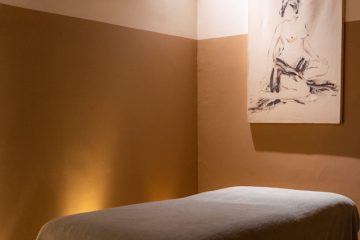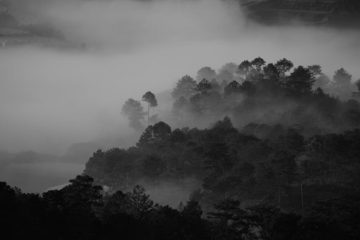Toward a Harmonious Coexistence between Plants and Cities
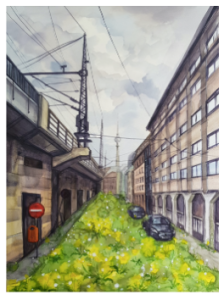
Are we as humans feeling happy with the places we inhabit? Do the locations where we put down roots fill us with peace and beauty? Would it be a good idea to root our cities with a special emphasis on the unexpected guests?
Starting from these questions, the group Artists for Plants, in collaboration with the Botanical Garden of the University of Palermo (Sicily, Italy), launched an international Call for Art Works in July 2023.
Artists for Plants is a creative collective, founded in 2019, that works on the links between art and science. It encourages the active involvement of artists from around the world to raise awareness of the fundamental role of plants and the plant world, through the beauty of art, for the very survival of the planet.
The aim of this year’s Call was to find new artistic visions of greener and more balanced cities of the future, collecting works dedicated to urban greenery and to the plants that grow in the city. As Silvia Chiodin, member of Artists for Plants, affirms,
we are used to see[ing] the skylines of our cities without the plants, but we need a new point of view that includes them, no matter if it is a higher or lower point of view. We need to try to change our perspective. We are asking artists to help us to imagine this new perspective, to see it through the eyes of art, of beauty, to engage and excite us for a future in which our cities will have roots that will plunge into the depths of the earth and rise up to the sky.
We asked artists to have a special look at plants living in gardens, on terraces, on roofs, on floors, and on walls; to plants grown as part of an urban planning and design project or by initiative of individuals; in spaces public or private; native or migrated; born spontaneously or planted by human beings; plants present, but also absent; future, past, clandestine, or legalized; plants with and without the right of citizenship.
As a response to the Call, artists from all over the world tried to look for harmonious coexistence between plants and cities, or, as Brazilian artist and botanist João Iganci wrote in his application, “to merge the essence of urban life with the grace of nature.”
We received an amazing richness of submissions: in terms of numbers (more than 230 artists sent in their works), in terms of location (they came from 47 different countries from all around the world), and in terms of artistic techniques (13 different genres, including photography, video art, digital art, installations, music, painting, dance, sculpture, poetry). From these entries, a jury of well-known experts selected 22 works of art and awarded a special mention to one school. The selected artworks were announced on 30 October 2023 at the Botanical Garden of the University of Palermo (Italy). At this occasion, Artists for Plants also launched the video gallery of the Call’s results.
“It was really hard to make a selection from the many beautiful artworks we received,” Professor Michelangelo Gruttadauria, president of the University Museum System of the University of Palermo (SIMUA) and member of the jury, reiterated at the presentation event.
Indeed it was, even more so because Artists for Plants has a cooperative and non-competitive vision, which seeks to appreciate every single submission to the Call. Therefore, we want to present here some of the works of art that were not selected for the final round. What is more, we’re showcasing all artworks we received via our social channels throughout January, February, and March 2024.
The overwhelming response to our Call is a poignant reminder of our responsibility to create sustainable, beautiful, green urban spaces that enable us to cohabitate more harmoniously with other living organisms. It underscores the global importance of the theme and proves, once again, that attention to plants and the plant world is a seed that is growing.
Here are a few examples we want to share with you:
Jingwen Yao (China): “Nature Reclaiming – Dandelions in Berlin”
As the gloomy city of Berlin is lit up by the vibrant blooms of dandelions, these resilient plants have found a way to take root and reclaim their space. Amidst the concrete jungle, the dandelions bring a touch of nature, reminding us of the beauty and resilience of life. The artwork captures the spirit of this transformation, showcasing the power of nature to regenerate and reclaim even the most unlikely of spaces.
João Iganci (Brazil): “Floral Kaleidoscope Metropolis”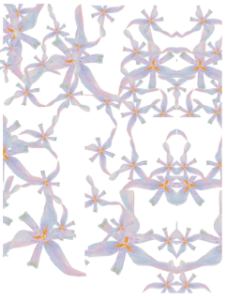
The work merges the essence of urban life with the grace of nature. It portrays a mesmerizing kaleidoscope of repeated flower patterns, where each petal forms a brilliant stroke of color. This intricate tapestry of blooms intertwines with tiny cityscape elements seen from above, symbolizing the delicate balance between urban development and the environment. The play of light and shadow, and the images repeated, create depth, offering viewers a compelling reflection on the need for harmonious coexistence between plants and cities.
Francesco Conte (Italy): “Visions of Salerno”
“I’m including photos made by myself, with editing from AI, Photoshop, and Autocad. They represent my vision of Salerno (Campania, Italy) and surroundings, and I would like it to be like this in near future. The first picture is of a father taking a stroll with his two children on one of the streets in the old town of Salerno, adorned with stunning trees and plants. The second photo depicts another narrow street in the old town, enriched with potted plants and surrounded by trees. These photos represent my dream of seeing a regenerated Salerno, elegant and green, for future generations.”
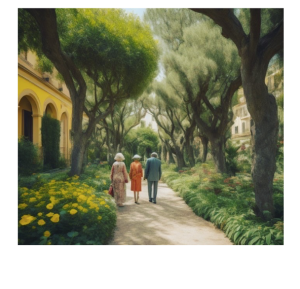
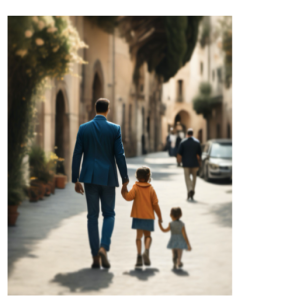
Keith Ang’ana (Kenya): “A New Dawn”
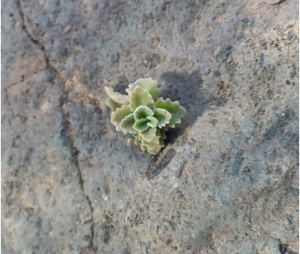 This plant blooms new pairs of leaves every few days, each time signaling a new dawn for it. It is particularly beautiful in the sense that the leaves that bloom are on opposite sides, therefore it ends up being symmetrical and very appealing to the eye.
This plant blooms new pairs of leaves every few days, each time signaling a new dawn for it. It is particularly beautiful in the sense that the leaves that bloom are on opposite sides, therefore it ends up being symmetrical and very appealing to the eye.
Lucila Kenny (Argentina): “Chromatic mapping / Plant behaviour”
“Mapping a place in my practice represents: walks, encounters, observations, experiments, and alchemy. I try to create a bond with a place and feel part of it for a while by observing the seasonal nature and its natural growth and exchange.
I learn by this connection.
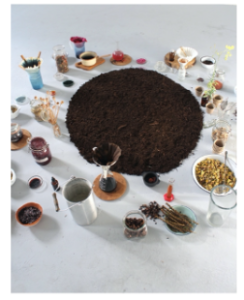
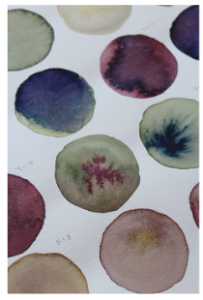
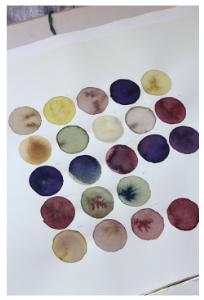
Using remains of plant material from the previous seasons to investigate and find those hidden colors and make ink is a way of tracing the dialogues between me and the plants. The inks are then used to draw dream landscapes/maps.
Acknowledging, observing, and learning in order to understand what is around me provides meaning to this life.
Natural colors are living characters with a personality and temperament. Like the plant from which we receive the color, these colors have a nature of their own. To be able to collaborate with them it is very important to get to know their nature. These colors come from somewhere and they go somewhere. They live, move, change, age, and evolve, just like you and me. As an artist you can get to know them and then maybe, if you are lucky and find a connection together, you can collaborate. For the countless moments of observation, the artists always receive unexpected gifts from the colors. In this collaboration there is always something extra that happens to them and that encourages the artists to create something beautiful in response. That is why we talk about dialogues between color and artist. A conversation that goes back and forth and takes shape in the experiments, sketches, and works of art.”
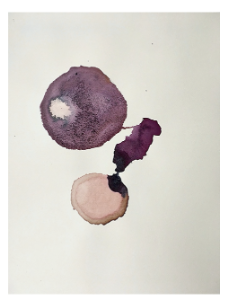
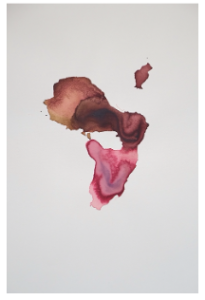
In the series there are: maps from Amsterdam (NL), Tilburg (NL), Buenos Aires (AR), Berlin (DE) and Accra (GH)
Drawings: plant ink on Hahnemühle fine art paper 58 x 75cm.
Alice Montorfano (Italy): “Filtra la luce”
I love the sensation of relaxing under a tree and feeling the slim beams of sun passing through the leaves. So I imagined to lay down under the trees, but the city was with me, under the trees as well, hugged by Nature.
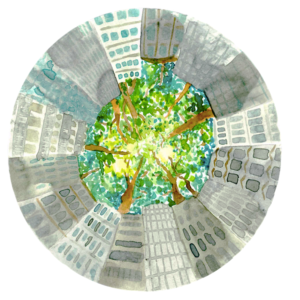
#
Sara Michieletto is a violinist and composer who is deeply passionate about plants. Recently, she has been conducting artistic research on the unraveling of the language that unites music and biosphere. As part of this research, for three years she has been running a scientific experiment of communication with clovers through music. The recently released album named “Ipermare” tries to depict, through original musical compositions also by her, the interconnectedness and unity of living beings.
Counterpoint blogs may be reprinted with the following acknowledgement: “This article was published by Counterpoint Navigating Knowledge on 13 February 2024.”
The views and opinions expressed on this website, in its publications, and in comments made in response to the site and publications are those of the author(s) and do not necessarily reflect the views and opinions of Counterpoint: Navigating Knowledge, its founders, its staff, or any agent or institution affiliated with it, nor those of the institution(s) with which the author is affiliated. Counterpoint exists to promote vigorous debate within and across knowledge systems and therefore publishes a wide variety of views and opinions in the interests of open conversation and dialogue.
Image credits: © with the respective artists; used with permission.

